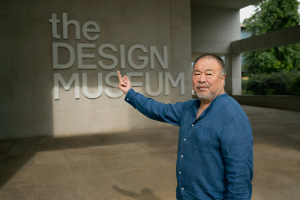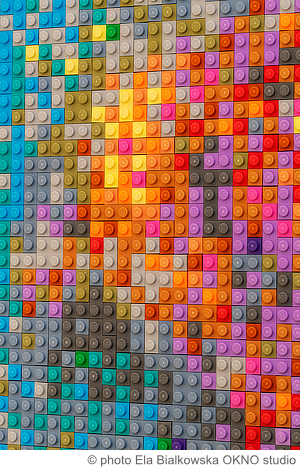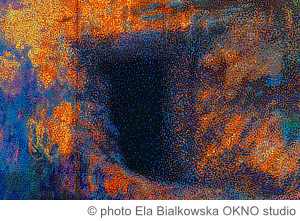 |
 |
 |
 |
 |
 |
| |
 |
|
 |
 |
 |
  |
  |
 |
 |
 |
 |
|
 |
 |
Weiwei Ai
|
|
* Pechino [Beijing], Cina [Zhōngguó/Zhōnghuá], 28 Agosto 1957 |
| nazionalità:
cinese |
|
 |
|
|
|
|
|
 |
 |
 |
PREMI |
 |
|  |
|
 |
 |
 |
|
|
 |
Praemium Imperiale
Sculpture
Japan Art Association |
|
 |
 |
 |
OPERE |
 |
|
 |
|
 |
 |
 |
|
|
 |
|
|
|
 |
|
|
  Stati Uniti [United States]
Stati Uniti [United States]
» Ancram |
|
|
 |
 |
 |
 |
BIBLIOGRAFIA |
 |
|
|
 |
|
 |
 |
 |
| SCRITTI DELL'AUTORE |
 |
|
|
 |
| Jacques Herzog, Pierre de Meuron, Ai Weiwei, "Serpentine Gallery Pavilion 2012", A+U. Architecture and Urbanisme 503, august 2012 [London 2012 Olympics], pp. 8-21 (8-49) |
|
|
|
 |
 |
 |
 |
L'AUTORE NEL CINEMA |
 |
|
|
 |
|
 |
 |
 |
| Titolo |
 |
|
 |
|
| Regia |
 |
|
 |
|
| Nazionalità |
 |
|
 |
|
| Anno di produzione |
 |
|
 |
|
| Interpreti |
 |
|
 |
| Danqing Chen, Ying Gao, Changwei Gu, Ai Weiwei |
|
| Ruolo dell'autore |
 |
|
 |
|
 |
 |
 |
 |
 |
 |
 |
MOSTRE |
 |
|
|
 |
|
 |
 |
 |
|
|
 |
 Ai Weiwei: Making Sense Ai Weiwei: Making Sense, London (United Kingdom), The Design Museum, 7 april / 30 july 2023
Ai Weiwei is one of the most significant and recognised artists working today. Known around the world for his powerful art and activism, Ai does not differentiate between disciplines: his practice glides across art, architecture, design, film, collecting and curating. This major new exhibition, developed in collaboration with Ai Weiwei, will be the first to present his work as a commentary on design and what it reveals about our changing values. Through his engagement with material culture, Ai explores the tension between past and present, hand and machine, precious and worthless, construction and destruction.
The exhibition draws on Ai’s fascination with historical Chinese artefacts, placing their traditional craftsmanship in dialogue with the more recent history of demolition and urban development in China. The result is a meditation on value – on histories and skills that have been ignored or erased. The exhibition will see some of Ai’s most important works displayed alongside collections of objects that have never been seen, and new commissions made for the exhibition. Not only is this Ai’s personal commentary on design, it is also a major opportunity for visitors to see his work through a new lens.
___________________________________________________________________
 The Design Museum unveils a major new work by celebrated global artist Ai Weiwei. The Design Museum unveils a major new work by celebrated global artist Ai Weiwei.
Constructed entirely of Lego, the work is a recreation of one the most famous paintings by French Impressionist Claude Monet. It is the largest Lego artwork Ai Weiwei has ever made.
Titled Water Lilies #1, the work is over 15m in length and will span the entire length of one of the walls in the Design Museum gallery. It is made from nearly 650,000 studs of Lego bricks, in 22 colours.
This vast new work will be seen in public for the very first time when the exhibition Ai Weiwei: Making Sense opens on Friday 7 April. It is his biggest UK show in eight years.
Water Lilies #1 recreates Monet’s famous painting, Water Lilies (1914 — 26), a monumental tryptich which is currently in the collection of the Museum of Modern Art in New York.
In the original painting, Monet depicts one of the lily ponds in the gardens of his home in Giverny near Paris. It is an image that has become world-famous for its depiction of nature’s tranquil beauty. However, the pond and gardens were a man-made construct, designed and created by Monet himself at the turn of the 20th century. He had the nearby river Epte partially diverted in order to create this idealised landscape.
 By recreating this famous scene, Ai Weiwei challenges our ideas of reality and beauty. The new image has been constructed out of Lego bricks to strip away Monet’s brushstrokes in favour of a depersonalised language of industrial parts and colours. These pixel-like blocks suggest contemporary digital technologies which are central to modern life, and in reference to how art is often disseminated in the contemporary world. Challenging viewers further, included on the right-hand side of Ai’s version is a dark portal, which is the door to the underground dugout in Xinjiang province where Ai and his father, Ai Qing, lived in forced exile in the 1960s. Their hellish desert home punctures the watery paradise. By recreating this famous scene, Ai Weiwei challenges our ideas of reality and beauty. The new image has been constructed out of Lego bricks to strip away Monet’s brushstrokes in favour of a depersonalised language of industrial parts and colours. These pixel-like blocks suggest contemporary digital technologies which are central to modern life, and in reference to how art is often disseminated in the contemporary world. Challenging viewers further, included on the right-hand side of Ai’s version is a dark portal, which is the door to the underground dugout in Xinjiang province where Ai and his father, Ai Qing, lived in forced exile in the 1960s. Their hellish desert home punctures the watery paradise.
Ai Weiwei has been using Lego bricks in his work since 2014, when he used them to produce portraits of political prisoners. But Water Lilies #1 is his largest ever creation in this medium.
Water Lilies #1 will be seen alongside another major new Lego artwork by Ai Weiwei, which is also making its international debut at the Design Museum. First announced in January, Untitled (Lego Incident) is part of a series of five expansive ‘fields’ where hundreds of thousands of objects will be laid out on the gallery floor. In this field, visitors will see thousands of Lego blocks which were all donated to the artist by members of public from around the world, in response to Lego briefly refusing to sell their products to him in 2014. These donated bricks are presented at the Design Museum for the first time as a fully-formed artwork.
Ai Weiwei: Making Sense will be the artist’s very first exhibition to focus on design and architecture. It sees Ai using design and the history of making as a lens through which to consider what we value.
Other highlights of the exhibition inlcude dozens of objects and artworks from throughout Ai Weiwei’s career that explore the tensions between past and present, hand and machine, precious and worthless, construction and destruction, such as his Han dynasty urn emblazoned with a Coca-Cola logo, which epitomises these clashes.
A number of examples of Ai’s ‘ordinary’ objects, where he has transformed something useful into something useless but valuable will also be shown. These include a worker’s hard hat cast in glass which becomes at once strong and fragile, and a sculpture of an iPhone that has been cut out of a jade axe-head.
Large-scale Ai Weiwei works will also be installed outside of the exhibition gallery, in the museum’s free-to-enter spaces as well as outside the building.
Justin McGuirk, Chief Curator at the Design Museum and curator of Ai Weiwei: Making Sense said: “Several of the works in this exhibition capture the destruction of urban development in China over the last two decades. With Water Lilies #1 Ai Weiwei presents us with an alternate vision – a garden paradise. On the one hand he has personalised it by inserting the door of his desert childhood home, and on the other he has depersonalised it by using an industrial language of modular Lego blocks. This is a monumental, complex and powerful work and we are proud to be the first museum to show it.”
Ai Weiwei said "Our world is complex and collapsing towards an unpredictable future. It's crucial for individuals to find a personalized language to express their experience of these challenging conditions. Personalized expression arises from identifying with history and memories while creating a new language and narrative. Without a personal narrative, artistic narration loses its quality. In Water Lilies #1 I integrate Monet's Impressionist painting, reminiscent of Zenism in the East, and concrete experiences of my father and me into a digitized and pixelated language. Toy bricks as the material, with their qualities of solidity and potential for deconstruction, reflect the attributes of language in our rapidly developing era where human consciousness is constantly dividing."
|
|
|
 La Commedia Umana. Memento mori, Venezia [Venice] (Italy), Abbazia di San Giorgio Maggiore, 28 august / 27 november 2022 La Commedia Umana. Memento mori, Venezia [Venice] (Italy), Abbazia di San Giorgio Maggiore, 28 august / 27 november 2022 |
|
|
| Ai Weiwei a Palazzo Strozzi, Firenze, Palazzo Strozzi, 22 september 2016 / 22 january 2017 |
|
|
| #SafePassage, Amsterdam, Foam Fotografiemuseum, 16 september / 7 december 2016 |
|
|
| La poética de la libertad. S.A.C.R.E.D., Cuenca (Spain), Catedral de Santa María y San Julián, 26 july / 6 november 2016 |
|
|
Andy Warhol | Ai Weiwei
Melbourne (Australia), National Gallery of Victoria, 11 december 2015 / 24 april 2016
Pittsburgh (USA), The Andy Warhol Museum, 4 june / 28 august 2016 |
|
|
| Ai Weiwei, London, Royal Academy of Arts, 19 september / 13 december 2015 |
|
|
| Ai Weiwei, Beijing (China), Galleria Continua, 6 june / 31 december 2015 |
|
|
| At Large: Ai Weiwei on Alcatraz, San Francisco, Alcatraz, 27 september 2014 / 26 april 2015 |
|
|
| Ai Weiwei. Evidence, Berlin, Martin-Gropius-Bau, 3 april / 7 july 2014 |
|
|
| Ai Weiwei. According to what?, Toronto, AGO Art Gallery of Ontario / Musée del beaux-arts de l'Ontario, 17 august / 27 october 2013 |
|
|
| Ai Weiwei. Resistencia y tradición, Sevilla, CAAC Centro Andaluz de Arte Contemporáneo, 1 february / 23 june 2013 |
|
|
| Ai Weiwei, Milano, Lisson Gallery, 12 april / 25 may 2012 |
|
|
| Ai Weiwei, Tilburg (NL), De Pont, 3 march / 24 june 2012 |
|
|
| Ai Weiwei: Entrelacs, Paris, Jeu de Paume, 21 february / 29 april 2012 |
|
 |
  |
 |
|
|